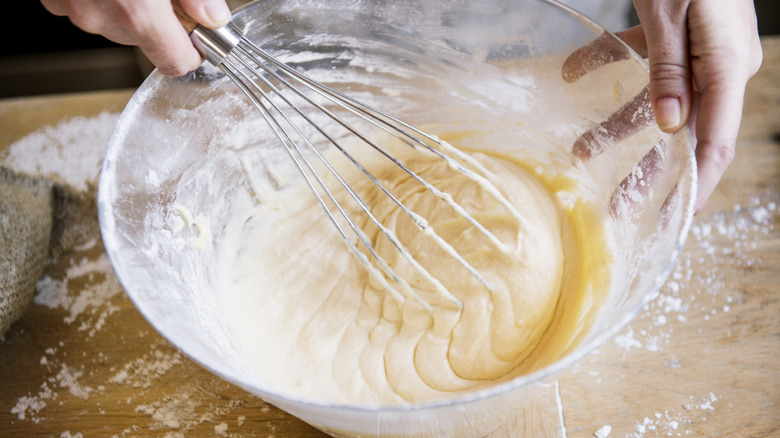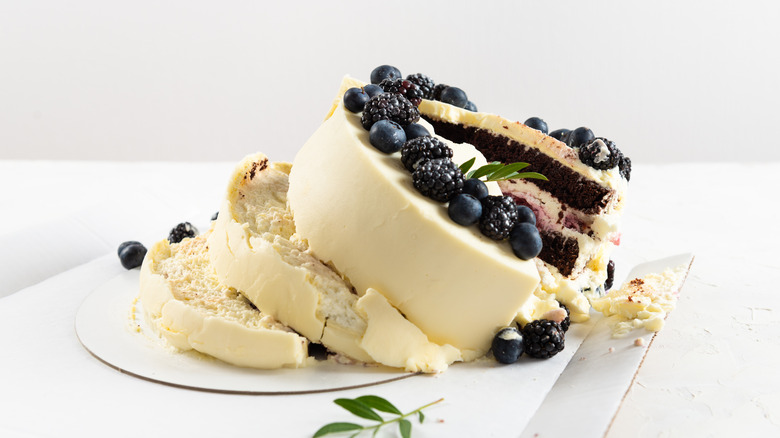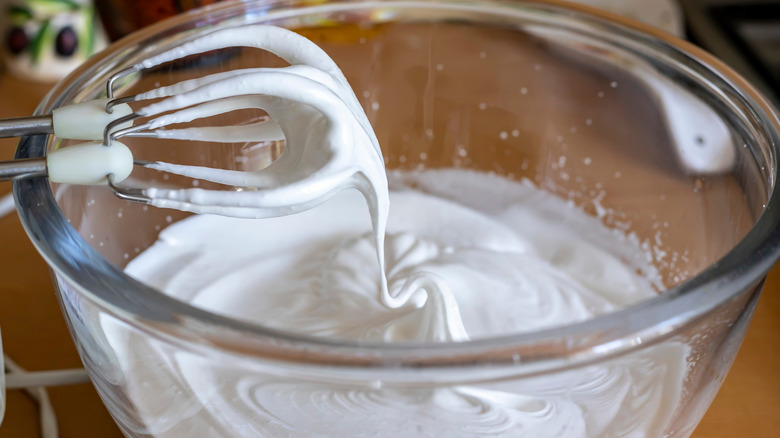Telltale Signs That Cake Batter Is Overmixed Vs. Undermixed
The saying goes that cooking is an art, and baking is a science. Essentially, this means that cooking is often flexible and susceptible to improvisation and ingredient swaps. Baking, on the other hand, requires a series of physical and chemical reactions to occur and tends to be more strict. Failing to exactly follow the instructions can make or break the outcome of a bake, so certain recipes may feel high stakes and intimidating, especially for novice bakers.
A common warning on cake recipes is, "Do not overmix." This cryptic guidance often appears in both from-scratch cake recipes and the simplest boxed mixes. But what exactly does it mean, how much mixing is considered "overmixing," and what happens when you overmix the batter? Plus, on the opposite end of the spectrum, is undermixing better or worse?
If you know what to look for, you can avoid overmixing or undermixing your batter. Baking does not have to be intimidating, and with practice, you can achieve the ideal consistency every time.
What happens when you overmix or undermix?
Both overmixing and undermixing can lead to structure and texture problems in baking. If you think about describing the texture of a good piece of cake, you're probably thinking of words like "light," "fluffy," and "soft." Improper mixing can lead to the opposite effect, resulting in a cake that is dense, firm, or deflated.
Cake has ingredients that strengthen its structure, such as flour, eggs, milk, and ingredients that weaken the structure, such as sugar and other liquids. The mixing process balances these ingredients and incorporates little bubbles of air into a batter.
Overmixing or undermixing can take those ingredients out of balance, impacting the final structure and texture of the cake. For example, when overmixed, the gluten in flour forms long strands that result in a dense, chewy final texture. To avoid any issues, it is important to get the timing just right. Some recipes may include guidance about how long to mix the batter, but at other times you may need to determine for yourself.
How to tell if batter is over or undermixed
Overmixing and undermixing typically occur the moment you combine wet ingredients with dry ingredients. Because of this, you likely don't have to worry when combining only wet or dry ingredients. (It's nearly impossible to sift ingredients like flour, salt, and baking soda "too much.")
A good place to start is mixing until just combined. The combined batter for spongy cake mixes should look satiny and form peaks. Before it gets to that point, an undermixed cake batter may still have streaks of visible flour and look chunky. If overmixed, the batter may become runny and slack.
With cakes featuring whipped egg foam, you'll also want to make sure you mix to the right consistency — forming "stiff peaks" is the usual standard. When overmixed, the egg whites may break and take on a cottage cheese consistency.
It is important to remember that different batters have different mixing points. Things like pancakes and muffins are especially easy to overmix, and should be mixed until just combined — in these cases, chunks and a few flours streaks are okay. At the opposite end of the spectrum, baked goods like cookies can handle a bit more thorough mixing.


